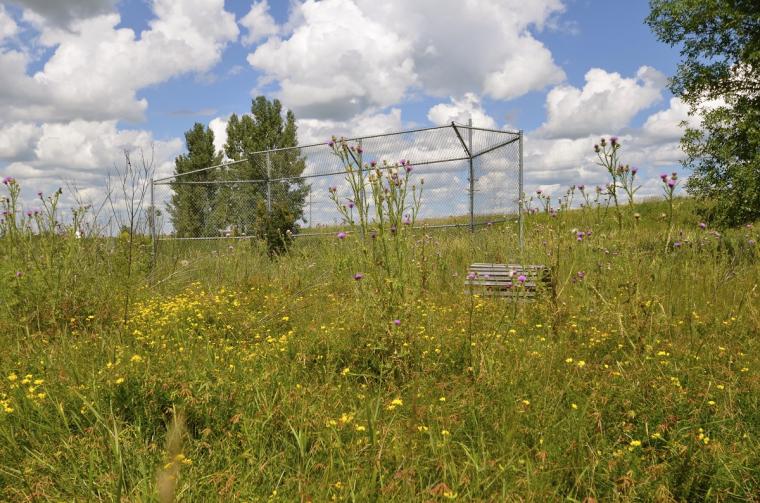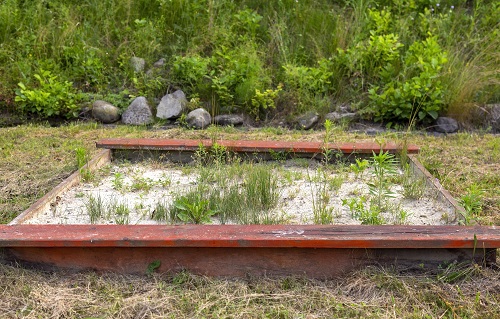
This is happening in Hawai’i but it’s really a case study of sports facilities in parks across the USA, with takeaways for everyone. A run-down municipal area, which has become the target of vandalism and vagrancy, is undergoing a restoration plan, thanks to some proactive input.
Makalapa Neighborhood Park, located on the island of Oahu, has most assuredly seen better days, according to the news website, Civil Beat. The baseball field is overgrown and choked with weeds. An entrance chain meant to block off vehicles had been broken. Even the bathroom and playground had been vandalized, spurring the City and County of Honolulu to take out both.
In other words, not much of a park was left, and what was left wouldn’t entice anyone to come and play.
“There’s no playground anymore, there’s no benches, there’s no water, there’s no tables, there’s nothing. There’s broken glass,” the National Park Service’s Meredith Speicher said at a recent neighborhood meeting.
But here’s something that runs true across the board, in every sector of society, in every state. Criminals love isolated areas, and they hate having company. And that’s why a new plan could work wonders.
City leaders now say their long-term goal to launch partial passenger service along Oahu’s elevated rail line, which they now plan to call “Skyline,” is finally within reach. The nine stations along the 10.7-mile stretch from east Kapolei to Aloha Stadium are slated to officially start service on June 30, officials announced:
The city’s plans to encourage lively walkable communities around rail stations mean Makalapa Neighborhood Park, with its view of nearby Aloha Stadium, is primed to become a thriving outdoor asset.
The side effect, making the park a destination for families with children, and for local rec programs to use for baseball or softball games, has the potential to revive it and drive out vandals. And with the input of a proactive council member, outside groups are now stepping up to engage the community in revitalizing the park. Steps outlined to Civil Beat include the following:
- Bringing in Community Users Groups, Particularly Youth: Officials will be hosting workshops with local children enrolled in an after school STEM program through Parents and Children Together
- Creating a Better Tree Canopy: Trees for Honolulu’s Future, an organization that promotes the planting of urban tree canopy, is also working on the park
- Increased Maintenance: “You really need maintenance. And that’s where I think Hawaii in general kind of fails,” said Andrew Kaufman, a professor of landscape architecture at the University of Hawaii who is partnering with Speicher on potential park designs.
 Creating access to parklands that might otherwise lie fallow and forgotten is the first step in combatting problems. It’s an ages-old story and one that is reflected nationwide (not just in Hawai’i). Without civic engagement, without access, without the investment of user groups, without foot traffic and without funding, parks will fall into disuse by the desired demographic (families and those who organize municipal sports programming, for example) and will begin to attract the wrong element (including criminals, vandals and those who want to camp out in the area in lieu of shelters and other facilities).
Creating access to parklands that might otherwise lie fallow and forgotten is the first step in combatting problems. It’s an ages-old story and one that is reflected nationwide (not just in Hawai’i). Without civic engagement, without access, without the investment of user groups, without foot traffic and without funding, parks will fall into disuse by the desired demographic (families and those who organize municipal sports programming, for example) and will begin to attract the wrong element (including criminals, vandals and those who want to camp out in the area in lieu of shelters and other facilities).
Bringing in the public helps counter crime in parks, noted Brian J. Graham, who was quoted several years ago in an article in SDM. Graham was describing the positive impact of disc golf courses on parks; however, his comments are germane to a broad array of sports facilities:
“Something the cities would see was that once they put in a disc golf course, it brought in a lot of people. That extra foot traffic in the park got rid of a lot of undesirable activity. Plus, disc golfers are actually very environmentally conscious, and they would pick up trash as they played. Gradually, parks started noticing that when you put in disc golf courses, it actually improved the area. We’d hear that time and time again, about disc golf really cleaning up the parks system.”
Add to that the fact that almost without exception, every athlete today, from professionals to weekend warriors, got their start at the municipal level. A recent study by the National Recreation & Parks Association found the following:
Park and recreation agencies offer a wide variety of youth sports options, including a mix of team and individual sport activities. The five most popular sports offered in terms of participation are all team sports. They include basketball (85 percent of survey respondents indicate that basketball is among the five most popular sports offered), baseball/softball (81 percent), soccer (73 percent), football, including flag and pee wee (58 percent) and volleyball (34 percent). Other sports that at least 10 percent of survey respondents indicate are among their most popular sports include:
- Tennis (33 percent)
- Swimming and Diving (20 percent)
- Track and Field (15 percent)
- Gymnastics (10 percent)
- Cheerleading (10 percent)
Low registration fees, abundant facilities and the potential for participants to make new friends and learn new skills have long been among the biggest benefits of parks nationwide. With that in mind, officials on Oahu are hoping that Makalapa Neighborhood Park can attract new users and provide productive activities for them. And according to Civic Beat, there are numerous entry points:
Some of the ideas being solicited can be implemented through quick builds like painting art on the pavement; however, some other concepts (a community garden or a skate park) could require more specialized development approaches. Still, Kaufman stressed the variety of benefits parks bring to communities which were all highlighted during the social isolation of the pandemic.
“Parks,” he said, “are just really super important.”

